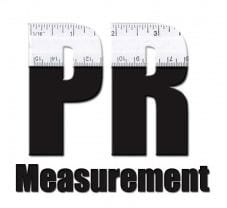 How do you measure the impact of PR? At the start of the last decade, you took out a pen-knife and glue and got your hands dirty with ink assembling press clippings. Today, clients expect more sophisticated data analysis to prove they’re getting a good ROI; enter the realm of analytics.
How do you measure the impact of PR? At the start of the last decade, you took out a pen-knife and glue and got your hands dirty with ink assembling press clippings. Today, clients expect more sophisticated data analysis to prove they’re getting a good ROI; enter the realm of analytics.
This was the subject of a recent Ketchum/PR Moment conference featuring Ketchum partner David Rockland who said,
“Analytics is about determining how communications affect a company’s base sales.”
Rockland shared four case studies, including Ketchum’s work with Con Agra Foods, where research into the traffic patterns around Twitter mentions of the company showed a third party link between Twitter and product sales, and allowed Ketchum to plan accordingly.
He also elaborated on the Leukemia & Lymphonia Society (LLS) which runs a number of charity races. Ketchum measured the LLS’ expenditures on its different marketing channels, i.e. direct mail, online, radio, and point of purchase, against the number of people who registered for races through each channel. Research found that the online channel offered the best expenditure to revenue ratio, and therefore the best ROI for PR campaigns, and advised the LLS to make incremental moves to online marketing.
Rockland added that consumer survey data provides a very direct means of measuring impact and is often the best way to determine whether or not consumers would drive sales by word of mouth promotion. He emphasized that analytics is not about turning PR professionals into statisticians, but rather being conscious of the impact of PR against a company’s existent marketing methods, and that most companies already collect a wealth of data with which to begin.
Other speakers at the conference included Jim Desler, Director of Worldwide PR at Microsoft, who emphasized the importance of clarity on precisely what you want to measure, and what specific perception of your client you are trying to create. Microsoft’s PRIME formula for analytics rates media quotes on a scale of 1 to 5 based on how well it combines advocacy of the desired perception with influence to make a purchase.
Andrew Smith, Managing Director of Digital Communications at Escherman, presented the free resources that Google Analytics offers, such as Bounce rate (the rate of people who visit a website then leave immediately), traffic sources, the search keywords that drive people to a website, and the effect of social media in driving people to the website.
Richard Bagnall, Gorkana Group Director, warned to avoid automated online monitoring software, mainly for the reason that it cannot analyze sentiments. For example, a typical automated online monitor would include the Big Ben Twitter feed in a search on users tweeting regularly about drugs. Why? Every hour Big Ben tweets “Bong bong bong…”
And finally, Paul Noble, joint author of Evaluating Public Relations, spoke on why there will never be a universal method to measure PR. All clients are different, all projects are different, and what may be positive data for one project or client would be negative data for another.
The lesson of the day was that PR analytics should embody the spirit of econometrics, working backwards to see what would have happened without your communications input, and should be tailored appropriately on a client by client, project by project basis. Clients will generally have enough data to work with, and it is our job to find the links within it and answer the question “Where would you be without us?”


